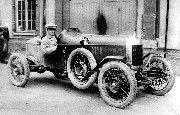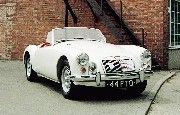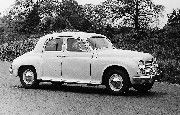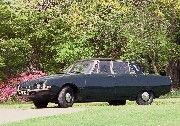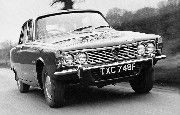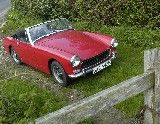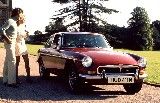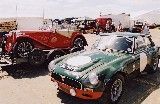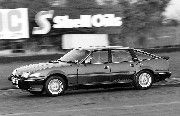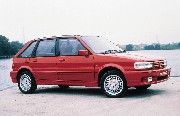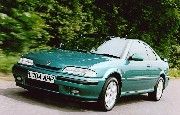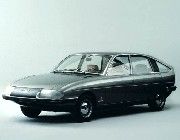MG Rover
As Britain’s last mass manufacturer struggles to survive, Andrew Noakes looks back at some of the classic MGs and Rovers.
Rover has been building cars for more than a century, MG for ‘only’ 80 years or so. But it’s the younger of the two marques which was the first to really make its mark.
MG’s origins lie in The Morris Garages, a collection of showrooms and workshops around Oxford which sold and serviced many makes of car, including the Morris Oxfords built up the road at Cowley. Morris Garages’ general manager Cecil Kimber began offering special bodywork for Morrises and by 1923 the first true MG sports cars were in production. It was actually later, in 1925, that the famous MG ‘Old Number One’ was built, and its Gold Medal success in the Land’s End Trial that year repeated a feat Kimber had achieved with another MG two years earlier.
By now MGs were selling well, and even greater sales success would come with the introduction of the M-type ‘Midget’, based on the new small Morris Minor saloon. In 1929 the company moved from its cramped workshops in Oxford to larger premises at Abingdon-on-Thames to cope with demand.
Sports Cars
MG became synonymous with sports cars in the 1930s, recording hundreds of class wins in major races and winning the Ulster Tourist Trophy three times. Record-breaking was popular and MG enjoyed success here, too: Captain George Eyston’s supercharged MG EX120 was the first 750cc car to exceed 100mph and its replacement – EX127, the ‘Magic Midget’ – topped 120mph in 1932.
After the war the T-series sports cars found a ready market in the USA, but MG’s bosses made the company stick to its increasingly old-fashioned formula for too long. It wasn’t until 1956 – with MG by then part of the British Motor Corporation, BMC – that Abingdon produced a true post-war sports car, the MGA.
It was a car that underlined the difference between handling and roadholding, running out of grip relatively early but in such a benign and predictable way that it was still a hoot to drive. With just 68bhp on tap it couldn’t quite ‘do the ton’, but Abingdon was working on a solution: in 1958 a Twin Cam MGA appeared, offering 108bhp and 115mph with acceleration to match many purpose-built racing cars of the era. Sadly the engine proved unreliable and production ended after barely 2000 had been made: a Twin Cam MGA today is a rare classic.
Rover
All this time, Rover had been quietly earning itself a reputation for well-made, conservative saloon cars. It, too, kept derivatives of its 1930s cars going long after the war, but all that changed in 1949 with the launch of the P4. Though it may look prosaic today with its trad wood-and-leather interior and upright styling, the P4’s full-width body and single ‘cyclop’s eye’ spotlamp in the grille were a major break with tradition. And there was plenty more to come.
Rover was developing gas turbine engines for cars, and the P4 structure was used to build the first of them, the 150mph JET1, in 1950. By the 1960s – while Austin’s Longbridge factory was busy producing millions of Minis, a handful of which were making their mark in international rallies – Rover in Coventry had developed a much more practical gas turbine car, the T4, which proved to be an early glimpse of a new production Rover, the P6.
Again the car was innovative, with an ‘endo-skeleton’ structure of enormous strength – much the same as the external safety cage used by Smart today. Married to an ex-Buick V8 engine Rover had bought the rights to, it produced the Rover 3500 – a quiet, comfortable saloon with 120mph performance that was much loved by police forces.
Range Rover
A detuned version of that engine powered the Range Rover – another innovative car, which created a whole new market sector – and this detuned version was also supplied to MG, both companies now being part of the huge British Leyland Motor Corporation. MG used the V8 for a high-performance version of its MGB, which had replaced the A in 1962.
Already there had been a six-cylinder version, the MGC, which spawned an exciting racing derivative, but the ponderous road car made few friends. By contrast the V8 MGB – available only in fixed-roof GT form – was a great car, but still sold only in small numbers thanks to a high price. The B was already of pensionable age, and more sophisticated alternatives were easy to find.
The B soldiered on until 1980, starved of development and disfigured by big, black bumpers which were a cheap and easy solution to American safety requirements – along with a raised ride height, which destroyed the cars’ sporting handling. The B’s even older stablemate, the Midget, suffered the same indignities and worse, being fitted with a Triumph Spitfire engine to keep down the costs of emissions compliance.
The 'M' Cars
|
|
Once the B and Midget had gone (and Abingon with them) the MG marque lay idle until it reappeared on hot Metro, Maestro and Montego models.
Enthusiasts were appalled, but had forgotten MG’s roots building sporting cars based on pedestrian saloons. Rover, meanwhile, had replaced the P6 and big P5 saloons with the SD1 – technically advanced in many areas just as previous Rovers had been, and a success in touring car racing, but hampered by appalling build quality.
The next generation of Rovers would be built in partnership with Honda, and some of the results would be outstanding – cars like the 800 Vitesse and the ‘Tomcat’ 220 Turbo coupé. The next generation of MGs sprang from an unlikely source – the dear old MGB, which had proved such a popular classic that British Motor Heritage at Faringdon had collected together all the tooling and had begun to build replacement bodyshells. ‘Project Adder’, the MG RV8 of 1992, inserted a developed Rover V8 and added muscle-bound arches to a BMH shell to create an instant sports car – a live-axled anachronism, but a real MG nonetheless.
It’s easy to forget all these characterful machines, hidden among the hundreds of thousands of Marinas and Allegros. MG, Rover and the other BLMC marques between them made a fair few duffers, but they also built some fine machines.
Today’s MG-Rover company is the result of generations of visionless management who ignored ideas such as Pininfarina’s 1968 family car concept, failed to invest in successful products, and failed to position the company in its marketplace and its industry. It’s because of them that a century of achievement might finally be over.
Links
- www.mg-rover.com (official site)
- www.mg-rover.org (fan site)
- www.austin-rover.co.uk
- www.andrewnoakes.com
My fav: MGC with a nice 150-200 (in race trim) horse straight 6.
www.realdriver.com/mg/images/gallery/mgc2.jpg
www.burgesstuning.free-online.co.uk/MGC.jpg
www.spinning-wheel.net/prod460.htm
www.birmingham101.com/101motorsCLASSICROCK.html
There's a nice article about this Healey cousin in C&SC.
Pettsie said:
Rover, Riley, Wolsley, Aston, Jaguar, Rolls, Bently TVR RIP.
Aston - going uphill and holds on to their heritage
Jaguar - going downhill fast
Rolls - they had a past. The woody is great though
Bentley - Brrrr, what about the 4x4
TVR - great cars, improvement every decade
garyDVO said:
Can we not ask for EEC assistance to help retain manufacturing within Europe? . . .
KEEP POLITICS OUT. Lets get a EU Business development rescue package.
Yes here in the UK we are bothered let’s get a real rescue plan.
Gary
I think EU rather sees Japs / Koreans coming up here to use their valuable experience in building sound cars. They supply for big plants and big work like we need so much here. Throw another penny in this money pit is a complete waste.
garyDVO said:
Jaguar - going downhill fast
The Dollar hit Jaguar. S Type is JD Power number 1 with the least depreciation in its class.
Jaguar was ensuring Ford remained in profit. The main Jag market is the USA the dollar has now given the products a premium.
Ford will want to move the production to USA to help this. Now that would also be disastrous.
Gary
Err, I'm talking about the cars not about the sales. Isn't that just the point why Bents and Rollers look so shite nowadays? 4x4 anyone . . . . Jaguar diesel estate - I mean: how to kill a brand with such splendid heritage? Off course neighbour John Jones proudly polishes his Jag-badge every saturdaymorning . . .
Gassing Station | MG | Top of Page | What's New | My Stuff

